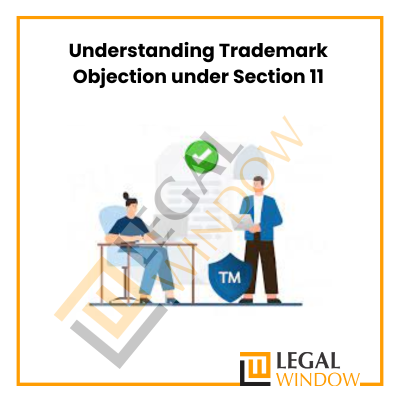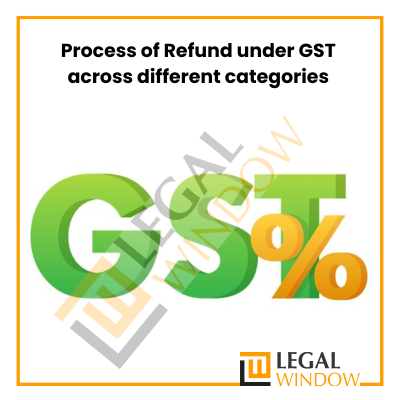
LLP (Limited Liability Partnership) is a business entity that provides the benefits of limited liability of the company to its members and allows to manage its management regularly as agreed upon in the event of a partnership. This article discusses all you need to know about the LLP agreement.
| Table of Contents- |
What is an LLP?
LLP is one of the corporate enterprises that offers limited liability benefits and partnership flexibility. LLP can continue its perpetual succession without looking at the alteration in partners. It can enter into contracts and hold assets in its name. The LLP is a separate legal entity, responsible for the full extent of its assets but the liability of its partners is limited to the amount agreed upon in the LLP.
No partner is legally liable for the private or unauthorized actions of other partners, thus individual partners are protected from the collective debt created by another partner’s wrongful business decisions or misconduct.
Governance of LLP
Regulation of LLP

LLP agreement
It is mandatory to frame and implement an LLP agreement within 30 days of LLP incorporation according to the LLP incorporation document (Form 2).It describes the roles, responsibilities, rights, and powers of partners in LLP and others. Therefore, it forms the basis for the effectiveness of LLP. The LLP agreement clarifies the administrative, operational, and managerial vision and sets out the decision-making processes, adding new partnerships and separating existing partners.
Therefore, a well-structured LLP laid the foundation and acted as a block of cement to strengthen the company. It is a guide for LLP. Creating all the documents integrated in this way requires experience and expertise in the field of Business and Contract Law and LLP.
General Clauses in every LLP Agreement
- Duration term of LLP
- Contribution by each partner in the LLP, total contribution, an additional contribution per partner (if any)
- Partner Rights and Duties
- Voting rights for each partner
- Capital Contribution and interest-sharing rate in the event of addition of a new partner
- Partner Retirement
- Death of any Partner
- LLP Borrowing
- Salary or Remuneration
- Term of Agreement
LLP Agreement and Tax Planning
As LLP is a firm that is why all the firm tax provision applies to LLP as long as the following criteria are met. There should be evidence of cooperation between the parties involved using the appropriate tool. Individual shares of partners must be clearly defined in the tool. Therefore, to earn tax benefits under the Income Tax Act, a clear firm LLP agreement must be a tool. It will contain all the details related to the partnership, their share, and their contribution. To obtain tax benefits, the following may be considered when drafting LLP agreements:
- To add provision of Interest Payment on capital contribution to be deducted from LLP revenue within the total limit.
- The LLP agreement must specify active partners and remuneration in order to reduce LLP revenue and tax liability. Remember, to include the name of the partner and to describe them as “active partners” in the LLP agreement for this benefit
Forms related to LLP
| Form Name | Purpose |
| RUN (Reserve Unique Name)- LLP | Reserving name of LLP |
| FiLLiP | LLP incorporation |
| Form 5 | Form for name change notice |
| Form 17 | Application and statement of firm conversion into LLP |
| Form 18 | Application and Statement for the conversion of a private company/unregistered public company into an LLP |
Procedure for LLP registration process

Step 1- Obtain DSC: Before starting the registration process, you must apply for a digital signature for the nominated LLP partners. This is because all LLP documents are online and need to be digitally signed. Therefore, the nominated partner must obtain his or her digital signature certificates from government-authorized agencies.
Step 2- Apply for DIN: You must apply for the DIN of all nominated partners for your proposed LLP. An application for DIN allocation must be made on Form DIR-3.
Step 3- Name authorization: LLP-RUN (Limited Liability Partnership-Reserve Unique Name) has been submitted to book the name of the proposed LLP to be processed by the Central Registration Center. But before quoting a word from the form, it is recommended that you use the free search site in the MCA portal.
The system will provide a list of the most common company names/LLPs available based on completed search terms. This will help you to choose words that do not match the existing ones. The registrar will only authorize the name if the name is not required in the opinion of the Central Government and does not differ from any existing corporate or LLP or board company or trademark.
The form of RUN-LLP must be assisted by the amount payable in terms of Annexure ‘A’ which may be approved/rejected by the secretaries. Submission of the form will be approved within 15 days to correct the defect. There is a provision for the provision of 2 proposed LLP names.
Step 4- LLP incorporation
- Form to be submitted by FiLLiP (Limited Liability Partnership) submission form which will be submitted to the Registrar with jurisdiction over the region where the registered LLP office is located. The form will be consolidated.
- Fees in terms of Annexure ‘A’ will be payable.
- This form also provides for a DPIN allocation application, if the nominee does not have a DPIN or DIN.
- An application for a share will only be approved by two people.
- The booking requests can be made via FiLLiP as well.
- If the application name is approved, this approved and reserved name will be completed as the proposed LLP name.
Step 5- File LLP Agreement
- The LLP agreement must be submitted to Form 3 online at the MCA Portal.
- Form 3 of the LLP agreement must be completed within 30 days from the date of submission.
- The agreement must be printed on a stamp paper whose value differs from state to state.
Period for LLP registration
It takes nearly 10 days for LLP registration which includes the process from DSC acquisition to the filing of Form 3, subject to departmental approval and revert from the relevant department.
Final words
LLPs are easy to make with payments ranging from ₹ 500 to ₹ 5600. Partners enjoy less risk as they do not have unlimited debt. Their assets will not be liquidated if the company is under debt, making LLP a safer option. It is not affected by factors such as death or retirement and therefore, the efficiency of the firm is guaranteed.LLPs get benefitted from a few taxes and do not require mandatory auditing unless their income is more than Rs40 lakhs. This article includes all you need to know about the LLP agreement.
Neelansh Gupta is a dedicated Lawyer and professional having flair for reading & writing to keep himself updated with the latest economical developments. In a short span of 2 years as a professional he has worked on projects related to Drafting, IPR & Corporate laws which have given him diversity in work and a chance to blend his subject knowledge with its real time implementation, thus enhancing his skills.
Categories
- Agreement Drafting (23)
- Annual Compliance (11)
- Change in Business (36)
- Company Law (147)
- Compliance (88)
- Digital Banking (3)
- Drug License (3)
- FEMA (17)
- Finance Company (42)
- Foreign Taxation (6)
- FSSAI License/Registration (14)
- GST (116)
- Hallmark Registration (1)
- Income Tax (199)
- Latest News (34)
- Miscellaneous (164)
- NBFC Registration (8)
- NGO (14)
- SEBI Registration (6)
- Section 8 Company (7)
- Start and manage a business (20)
- Startup/ Registration (126)
- Trademark Registration/IPR (40)
Recent Posts
About us
LegalWindow.in is a professional technology driven platform of multidisciplined experts like CA/CS/Lawyers spanning with an aim to provide concrete solution to individuals, start-ups and other business organisation by maximising their growth at an affordable cost.







